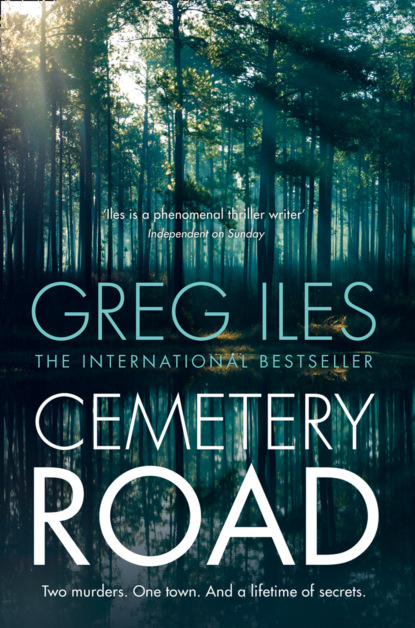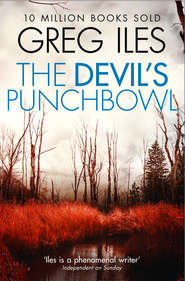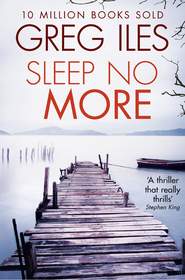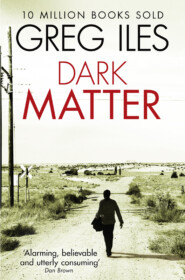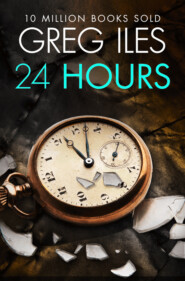По всем вопросам обращайтесь на: info@litportal.ru
(©) 2003-2024.
✖
Cemetery Road
Автор
Год написания книги
2019
Настройки чтения
Размер шрифта
Высота строк
Поля
She reaches over the counter and squeezes my hand, then turns to prepare my coffee. “You going to sit? Or you in too much of a hurry?”
“Do you have time to sit?”
She looks around the store and smiles again. “Be there in a sec. How’s your dad doing?”
“’Bout the same,” I lie, from habit.
As I survey the eight café tables, I hear the couple speaking French while consulting a guidebook. On the round table before them lie copies of Richard Grant’s Dispatches from Pluto and Richard Wright’s Native Son. Anticipating the conversation Nadine and I will have, I detour into the book-signing nook, a C-shaped banquette set on a large dais raised two feet above the rest of the café.
The walls above the banquette are covered with signed author photos, most black-and-white. Facing me as I take a seat are Rick Bragg, Chris Offutt, Kathryn Stockett, John Grisham, and Pat Conroy (that one signed shortly before his death). Above these, a dozen more photos climb toward the ceiling. Behind me hangs a collection of signed photos given to Nadine by loyal customers. These include Eudora Welty, James Dickey, and Donna Tartt, as well as Mississippi blues singers Sam Chatmon and Son Thomas. Placed side by side to my left are signed publicity shots of the young Elvis and Jerry Lee Lewis, wearing their 1950s duds. Jerry Lee is considered practically a native son, since he hails from Ferriday, Louisiana, just forty miles down the river. Rarest of all is a signed photo of Bobbie Gentry, the reclusive singer of “Ode to Billie Joe.”
Waiting for Nadine, I recall a weekend when Buck recruited a group of musician friends from around the South to play this store. Despite the superior musicianship, Buck included me both nights. We had two guitars, a mandolin, a fiddle, a bass, a harmonica, and a trap kit. After one set, the crowd got so big that people spilled out into the street, and rather than interfere, the cops closed Second Street to auto traffic and gave us a block party. Sometimes living in a small town is cool.
Nadine walks lightly up the steps to the nook and sets a heavy china mug in front of me. She joins me at the table with a cup of green tea and gives me a smile designed to buck up my spirits.
“No avoidance today,” she says. “The river, I mean. It was bad, huh?”
“Bad enough. To tell you the truth, I feel like I killed Buck.”
Her eyes darken. “Oh, come on. That’s bullshit.”
“Is it? I knew when I published that story it would make people furious. I tried to argue him out of it, but Buck wanted it in the paper. It was so unlike him to stir up controversy. All the years he lived here, he never did anything like that. He went out of his way not to. But this was like a mission for him. A life quest.”
“Why was it so important to him? I’m guessing you know a lot more than you put in the paper.”
“Some. But I hadn’t talked to him in a couple of days. I was really sort of waiting for the next shoe to drop.”
“I guess it has.” Nadine blows air across her tea. “Just not the way you were hoping.”
“I was hoping the Department of Archives and History would come in here and take over the site. They’ve got a lot of power in these situations. They appoint their own board, and in theory are immune to political pressure. They can place a preservation easement on public land—which the mill site is—and that would give them control of the site. At least while they survey and assess it.”
“That’s exactly what people are afraid of, right? It would have delayed construction?”
“No doubt.”
“Possibly even ended it?”
“If the site is what Buck believed it was.”
“Which is what? A site like Poverty Point? A potential UNESCO World Heritage site?”
“Yep. And I think it is. Poverty Point is only forty miles from here, as the crow flies. And there are remnants of that same culture down at Anna’s Bottom, north of Natchez. Buck believed that a deeper strata might hold evidence of an even older culture, like the one at Watson Brake, Louisiana. That’s only seventy miles from here, and it predates both the Giza pyramids and Stonehenge.”
Nadine is smiling with what looks like wistfulness. “My dad took me to Poverty Point when I was a little girl. I never told you that. It’s one of my few good memories of him. We had a picnic there. When you think about people living along the river before the pyramids, that’s pretty mind-blowing.”
“If only Buck had made his finds in the middle of nowhere, rather than an industrial park.”
Nadine pulls a wry face. “One that was nearly awarded Superfund status for its toxic sludge. What did you leave out of your article?”
“Mostly Buck’s persistence. About thirty years back, some small clues got him thinking there might have been an ancient civilization near here, one that vastly predated the known tribes. The Indians we’re famous for—the Natchez, mainly—were relative latecomers. They’re fascinating because they were sun-worshipping, corn-growing mound-builders, like the Maya. Buck first made his reputation by documenting their involvement with the French and English in slave trading.”
“The Indians were involved in the slave trade?”
“Big time. Anyway, the electroplating factory that used to sit on the paper mill site was built during World War Two. Buck had heard rumors that the construction workers turned over artifacts every day with their bulldozers. He tracked down a few old-timers, checked out the relics they’d given to their kids. But it was all later-era stuff—1500 to 1730. A lot of guys would have quit there, but Buck had seen descriptions of the site that predated even its agricultural use. Before that land was plowed up during the early 1800s by tobacco and cotton farmers, there were supposedly semicircular rings on the ground—raised concentric ridges facing the river, possibly built up on an older bend where the river used to flow. That’s exactly how Poverty Point is oriented.”
“I remember.” Nadine is nodding and smiling as though reliving her childhood picnic. “Buck couldn’t prove that?”
“No. Most of the acreage around the factory had been graded flat and paved over. The company refused to let him dig out there—even on the fringes—and Buck was so busy with other projects that he just let it go.”
Nadine sips her tea. “So what made him suddenly dig at the mill site this month? Finding that mysterious map?”
“Yeah. I was vague in the article, because the guy who found it didn’t want to be named.”
Nadine gives me a look that says she fully expects me to take her into my confidence. When I hesitate, she says, “It’s in the vault.”
“Okay. Six weeks ago—just as the county started tearing down the old factory in anticipation of the Chinese deal going through—old Bob Mortimer, the antique dealer, came into possession of some books from the attic of a local antebellum home. Folded into one he found some papers. Three sheets were early nineteenth-century maps that turned out to be hand-drawn by a guy named Benjamin L. C. Wailes.”
“The famous historian mentioned in your story.”
“Right. The first geologist in this part of Mississippi. Wailes’s maps are like the Bible of archaeology in this region.”
“And this new map showed what, exactly? Indian mounds?”
“Yes, but also the concentric semicircular ridges Buck had heard about. Plus some depressions that might be holes for wooden posts, like Mayan stelae. Posts oriented into a Woodhenge, a huge circle for astronomical observations.”
“Like Stonehenge?”
“Exactly like that. Or Cahokia, a similar site up in Illinois. Anyway, as soon as Buck saw the map, he intuited the whole history of the place. He figured a succession of tribes had built over the original earthwork of that first Neolithic culture, because the site was so good. And once Buck saw that Wailes map, nothing was going to stop him from digging.”
“And a week ago, the county conveniently finished tearing down the old factory. Even the parking lot, right?”
“Yep. Of course, no one was going to give him legal permission to dig there. The Chinese won’t either, once all the papers go through.”
“And soon there’ll be a billion-dollar paper mill sitting on top of it. So he did it guerrilla style.” Nadine smiles with fond admiration. “Who bailed him out of jail? I’m guessing you.”
“I should have left him there. Maybe he’d still be alive.”
She sips her tea and checks on the French tourists. “So why hasn’t the state come in and roped off the site?”
“Normally they would. But that mill—plus the interstate and the new bridge to service it—is going to transform all of southwest Mississippi. It’s like the Nissan plant going to Canton. The goddamn governor is going to be out there in an hour blessing the ground. Trump’s commerce secretary is flying in for a photo op, for God’s sake. In a perfect world, MDAH would have shut it down yesterday, if not over the weekend. Buck’s case was very strong. As I wrote in the article, a lot of archaeologists believe Poverty Point was a pre-pottery culture. That its builders only used carved stone bowls obtained from other tribes. But the potsherds Buck found help support the theory that Poverty Point was the original pottery-making center of the Lower Mississippi Valley. There’s no tempering material mixed into the clay of the fragments he found. He also found drilled beads that match Poverty Point artifacts, as well as what are called Pontchartrain projectiles. He had no doubt about what he’d discovered. But a boatload of academics could be hired to refute his assertions. So. While the Department of Archives and History may have the legal power to act in this situation, we live in the real world.”
Nadine laughs. “You call Mississippi the real world?”
“Sadly, yes. The only thing that could change the equation is bones. And that’s what Buck went back last night to find.”
She looks confused. “I thought Buck died in the river.”
I shake my head. “Quinn told me he went back to the mill site last night.”





